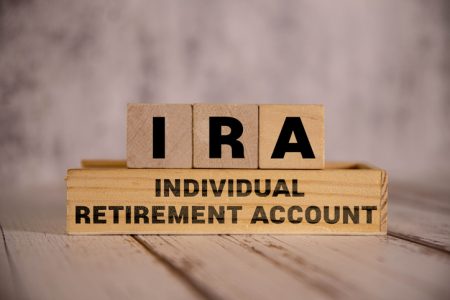Retiring with $1 million is a common goal for couples, but how long it lasts depends on where they live and the lifestyle they want. For some, low housing costs, manageable healthcare expenses, and reliable Social Security benefits can help make $1 million last. Investment returns also influence how far the money will go. Others may face higher costs or a longer retirement horizon that requires drawing more heavily from savings.
A financial advisor can help you assess whether you have enough saved to support the type of retirement you want.
What Shapes a Couple’s Retirement Budget?
Several variables influence how much a retired couple can safely spend each year and how long their retirement savings will last. Understanding these factors helps in setting realistic expectations and adjusting plans over time.
- Life expectancy: The longer the retirement period, the more a couple needs to stretch their savings. Planning for one spouse to live into their 90s is a common assumption.
- Spending needs: Annual expenses vary based on lifestyle, debt, travel and healthcare. Couples with modest needs may withdraw less, while others might require a larger drawdown.
- Location: Where a couple retires affects housing, taxes, and healthcare costs. Low-cost areas can make a fixed nest egg last longer.
- Investment returns: The performance of the retirement portfolio directly impacts how much income it can generate. Consistent returns help sustain withdrawals; volatility may require spending adjustments.
- Inflation: Rising prices reduce purchasing power over time. Even a 2%–3% annual inflation rate can significantly impact long-term budgets.
- Healthcare costs: Out-of-pocket medical expenses tend to increase with age. Planning for premiums, prescriptions, and potential long-term care is a key part of budgeting.
- Social Security and pensions: Reliable income streams reduce the need to withdraw from savings accounts, helping the portfolio last longer.
Retirement Withdrawal Strategies for a Couple With $1 Million
Deciding how to draw down a $1 million portfolio can shape the course of a couple’s retirement. A well-structured withdrawal strategy not only helps fund day-to-day living but also helps manage market volatility and the risk of outliving savings. Below are three withdrawal approaches couples often use, each with distinct mechanics and trade-offs.
The 4% Rule

Originally developed as a rule of thumb, the 4% rule offers a fixed-rate approach to retirement spending. The idea is to withdraw 4% of the starting portfolio in the first year of retirement, then increase that amount each year by the rate of inflation.
A couple retiring with $1 million would withdraw $40,000 in year one. If inflation is 3%, they would withdraw $41,200 in year two. The rest of the portfolio remains invested, ideally growing over time to offset withdrawals. This strategy assumes a roughly 30-year retirement and historical asset returns 50% and 75% of a portfolio allocated to stocks (and 25% to 50% allocated to bonds). It offers predictability but lacks flexibility in response to market swings or lifestyle changes.
The 4% rule may be best suited for couples who prefer steady, inflation-adjusted income and have moderate confidence in long-term market growth.
Dynamic Spending
Dynamic spending strategies modify annual withdrawals depending on how the portfolio performs. This approach aims to reduce the chance of running out of money during a long or volatile retirement by scaling spending up or down each year.
Let’s say the couple’s portfolio earns 10% in year one. They might choose to increase their withdrawal from $40,000 to $45,000. But if the market declines by 10% the following year, they might reduce their withdrawal to $35,000 to avoid selling investments at a loss. Some dynamic approaches also set “guardrails” to prevent income from fluctuating too wildly.
This approach may be appropriate for couples who want to be responsive to market performance and are willing to adjust their lifestyle if needed.
The Bucket Strategy
The bucket strategy segments retirement assets into time-based “buckets,” each with its own investment profile. This helps couples avoid drawing from stocks during market downturns by using more stable assets for near-term needs.
Here’s how a couple with $1 million in retirement savings may structure their portfolio:
- Bucket 1 (Years 1–3): $120,000 in cash and short-term bonds
- Bucket 2 (Years 4–10): $280,000 in intermediate-term bonds or conservative allocation funds
- Bucket 3 (Years 11+): $600,000 in diversified equities and long-term growth investments
Withdrawals come from Bucket 1, which is refilled periodically by selling assets from the other buckets when markets are favorable.
The Bucket Strategy may be a good option for you and your spouse if you value stability in short-term income and want to reduce sequence-of-returns risk.
Is $1 Million Enough to Retire for a Couple
For some couples, $1 million in retirement savings—when paired with Social Security—can provide a stable foundation. Take a couple who owns their home, spends around $55,000 annually, and receives $40,000 per year combined in Social Security. That leaves $15,000 to be drawn from savings each year, a 1.5% withdrawal rate. With modest investment returns and controlled expenses, this couple could preserve their principal for decades.
Contrast that with a couple living in a high-cost metro area, renting their home, and spending $90,000 annually. Even if they receive $50,000 in combined Social Security, ignoring taxes, they would need to withdraw $40,000 a year from savings—matching the 4% rule from year one. Over time, inflation, healthcare costs, or market downturns could push their withdrawal rate higher, putting long-term sustainability at risk. In this case, $1 million might not be enough to cover a multi-decade retirement without cutting expenses or downsizing.
These scenarios show that the same $1 million can function very differently depending on fixed income, cost of living, and spending behavior. Social Security helps reduce pressure on the portfolio, but how the gap between income and expenses is managed will ultimately determine whether $1 million lasts.
Bottom Line

Retirement planning with a $1 million nest egg doesn’t follow a single formula. Some couples may stretch that amount comfortably over several decades, while others could run into shortfalls within a few years. The difference often comes down to choices about spending, housing, timing and how income is drawn from savings.
Retirement Planning Tips
- If you’re looking for ways to boost your nest egg, a financial advisor can help you create a plan to grow your retirement savings over time. Finding a financial advisor doesn’t have to be hard. SmartAsset’s free tool matches you with vetted financial advisors who serve your area, and you can have a free introductory call with your advisor matches to decide which one you feel is right for you. If you’re ready to find an advisor who can help you achieve your financial goals, get started now.
- SmartAsset’s Social Security calculator can help you estimate future monthly government benefits.
Photo credit: ©iStock.com/Jacob Wackerhausen, ©iStock.com/Jacob Wackerhausen, ©iStock.com/JLco – Julia Amaral
Read the full article here












